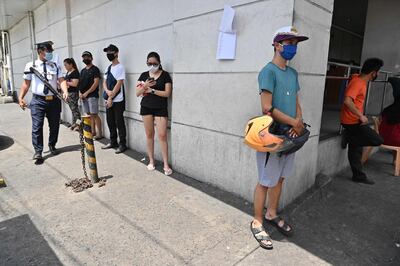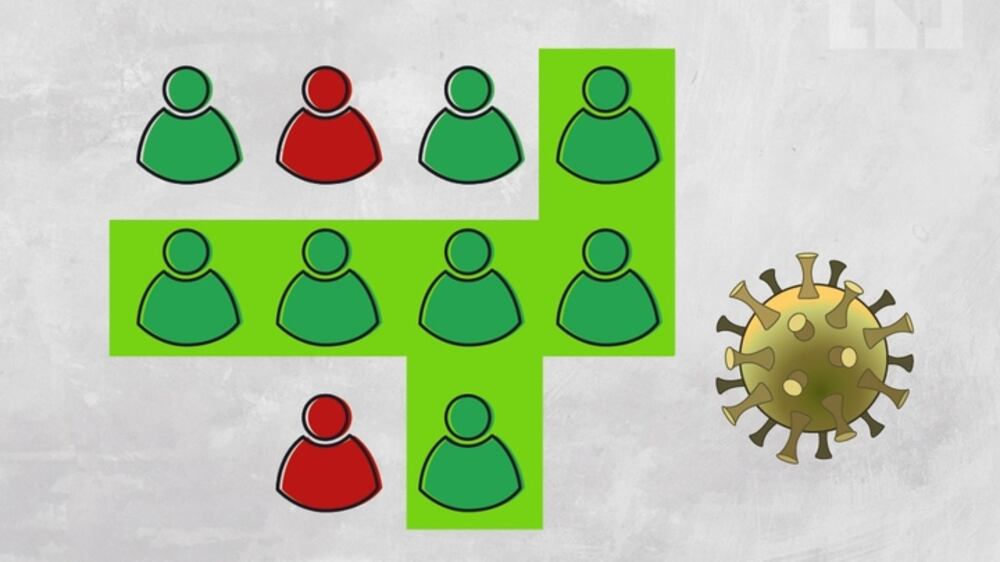It’s hard to sum up social distancing in a few words because it’s an umbrella term that sums up various types of behaviour that help slow the spread of a contagious disease.
Essentially, it is exactly as it sounds: maintaining a physical distance from others that is greater than usual and avoiding busy public places.
"We don't realise how interconnected we are until we're asked to avoid people," Dr Steven Gordon of Cleveland Clinic says with regards to social distancing.
The first wide use of the term is believed to have been in 2003 during the Sars outbreak, which was also a novel coronavirus. The term encompasses a lot, but the ultimate goal is to minimise exposure to infected people, therefore dampening the spread of disease.

There are various definitions and actions but, first and foremost, social distancing means avoiding large gatherings and places where many people congregate, such as malls, theatres and sports stadiums. This is why governments, including that of the UAE, are temporarily closing schools, nightclubs, cinemas and gyms; and why conferences, concerts and festivals are being postponed or even called off (on Wednesday, Glastonbury in the UK was cancelled. It was scheduled for June).
On its website the World Health Organisation says a key part of social distancing is maintaining at least a one-metre space between “yourself and anyone who is coughing or sneezing”. It says that if you are any closer to someone with these symptoms, you may “breathe in the droplets, including the Covid-19 virus if the person coughing has the disease”.
But much is still unknown about Covid-19 and the mechanism by which it spreads. That’s why the European Centre for Disease Prevention and Control points out that quick decision-making is vital when it comes to social distancing.
“The experiences with Covid-19 in China indicates that the early, decisive, rapid, co-ordinated and comprehensive implementation of social distancing measures are likely to be more effective in slowing the spread of the virus than delayed actions,” it said.
It estimates “that if a range of non-pharmaceutical interventions, including social distancing, had been conducted one week, two weeks or three weeks earlier in China, the number of cases could have been reduced by 66 per cent, 86 per cent and 95 per cent, respectively, together with significantly reducing the number of affected areas”.
Watch: What is herd immunity?
Covid-19: What is herd immunity?

Back to social distancing: it is an incredibly important tool for society during a pandemic, but the action does often come at a personal cost, as the European Centre for Disease Prevention and Control acknowledges. It points out essential services can be affected, that many businesses and individuals incur financial losses and also that mental health problems can increase for some as a result of isolation, among other things. But, ultimately, it saves a lot of lives.
Also, Stanford professor Michael McFaul points out that while you may need to increase your physical space, there is no need to be antisocial (get on Zoom, and chat to your colleagues, family and friends).
#PhysicalDistancing is a much better term than #SocialDistancing.
— Michael McFaul (@McFaul) March 18, 2020
Here are some other tweets that tackle and explain social distancing
Both lightheartedly and in a more serious manner...
My name is Wendy, and I have vocal cord paralysis and wear a tracheostomy tube to help me breathe. My life matters, and the lives of all #disabled, immunocompromised and elderly people matter. Please think of us before you go out to a bar. #HighRiskCovid19 #SocialDistancing pic.twitter.com/Il7bTnDpsk
— Wendy Lu (@wendyluwrites) March 15, 2020
When someone's not practicing proper #SocialDistancing pic.twitter.com/MFzgkBPEoM
— TrekCore.com 🖖 (@TrekCore) March 12, 2020
What a fantastic visualization.
— Enes Kanter (@EnesKanter) March 15, 2020
🚨 #SocialDistancing
-The one who stayed away saved all the rest. pic.twitter.com/V00xTCZo5T
The next 7 days are vital. Now is the time to #FlattenTheCurve.
— Dr Tony Holohan (@CMOIreland) March 16, 2020
Every one of us must play our part;
1. Reduce your social contacts – see only a handful of people in your network
2. Distance yourself 2 metres from people in shops & supermarkets #COVID19 #SocialDistancing pic.twitter.com/XlhusMYfiP
A bit of humor for those who need a laugh today#SocialDistancing pic.twitter.com/3alOHKFTPP
— 🤩 Debbie Iancu-Haddad 🍒 (@debbieiancu) March 18, 2020




